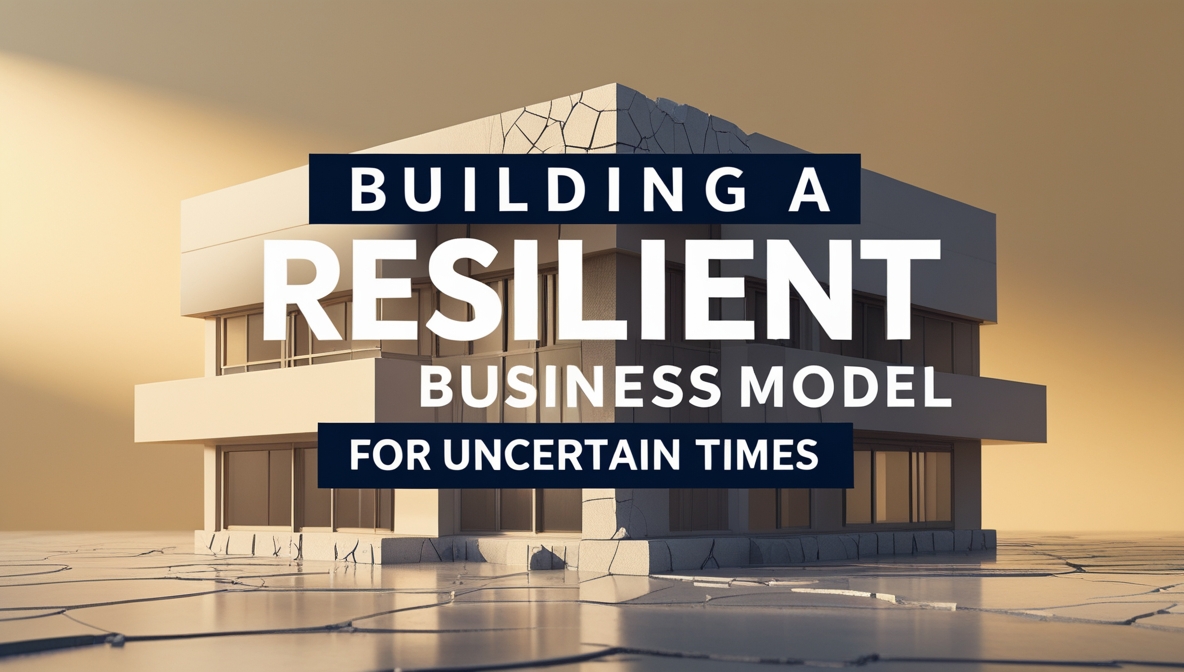Building a Resilient Business Model for Uncertain Times
We live in a world of constant change. From global pandemics and economic fluctuations to rapid technological advancements and shifting consumer preferences, businesses face a barrage of uncertainties. In this dynamic environment, a resilient business model is no longer a luxury—it’s a necessity for survival and sustained success.
Understanding Business Model Resilience
A resilient business model is one that can adapt and thrive in the face of unexpected disruptions. It’s not about predicting the future, but rather about building flexibility and agility into your operations. A resilient model possesses several key characteristics:
- Diversification: Reliance on a single product, service, or customer segment makes a business vulnerable to shocks. Diversification across offerings, markets, and revenue streams mitigates risk.
- Adaptability: The ability to quickly adjust to changing market conditions, customer needs, and technological advancements is crucial. This requires a flexible organizational structure, efficient processes, and a culture of innovation.
- Robustness: A robust model can withstand initial shocks without significant damage. This involves having strong financial reserves, efficient supply chains, and contingency plans in place.
- Redundancy: Having backup systems, suppliers, and processes ensures business continuity in case of disruptions. This can include dual sourcing, backup servers, and cross-training employees.
- Learning and Innovation: A resilient business is constantly learning from its experiences and adapting its strategies. This requires a culture of continuous improvement, data-driven decision-making, and a willingness to experiment.
Key Strategies for Building a Resilient Business Model
Building a resilient business model is an ongoing process that requires careful planning, execution, and monitoring. Here are some key strategies to consider:
1. Diversify Revenue Streams
Over-reliance on a single product or service can be catastrophic if demand suddenly drops. Diversification can take many forms:
- Expanding product/service offerings: Offer complementary products or services that appeal to the same target market or explore new markets altogether.
- Developing subscription models: Recurring revenue streams provide stability and predictability.
- Exploring new distribution channels: Reach new customers through online marketplaces, partnerships, or direct-to-consumer sales.
2. Build Strong Customer Relationships
Loyal customers are more likely to stick with you during tough times. Focus on building strong relationships through:
- Exceptional customer service: Go above and beyond to meet customer needs and exceed their expectations.
- Personalized communication: Tailor your messaging and offers to individual customer preferences.
- Building a community: Create a sense of belonging among your customers through online forums, events, or loyalty programs.
3. Optimize Your Supply Chain
Supply chain disruptions can cripple even the most successful businesses. Mitigate risk by:
- Diversifying suppliers: Avoid over-reliance on a single supplier by sourcing from multiple vendors.
- Building strong relationships with suppliers: Foster open communication and collaboration to ensure reliable supply.
- Implementing robust inventory management: Optimize inventory levels to avoid stockouts and minimize holding costs.
- Nearshoring or reshoring: Consider bringing manufacturing or sourcing closer to home to reduce reliance on global supply chains.
4. Embrace Technology and Digital Transformation
Technology can play a crucial role in building resilience by:
- Automating processes: Increase efficiency and reduce reliance on manual labor.
- Enabling remote work: Ensure business continuity during lockdowns or other disruptions.
- Improving data analytics: Gain insights into customer behavior, market trends, and operational performance.
- Enhancing cybersecurity: Protect your data and systems from cyberattacks.
5. Develop a Strong Financial Foundation
A healthy financial position is essential for weathering economic downturns. Focus on:
- Maintaining adequate cash reserves: Build a financial cushion to cover unexpected expenses and revenue shortfalls.
- Managing debt responsibly: Avoid excessive debt that can become a burden during difficult times.
- Diversifying funding sources: Explore different financing options, such as venture capital, angel investors, or government grants.
6. Foster a Culture of Adaptability and Innovation
A resilient business is one that can quickly adapt to changing circumstances. This requires:
- Empowering employees: Encourage employees to take initiative and make decisions.
- Promoting continuous learning: Invest in training and development to keep employees up-to-date with the latest skills and technologies.
- Encouraging experimentation: Create a safe space for employees to try new ideas and learn from their mistakes.
7. Implement Scenario Planning and Contingency Plans
Prepare for potential disruptions by:
- Identifying potential risks: Conduct a thorough risk assessment to identify potential threats to your business.
- Developing scenario plans: Create different scenarios based on potential disruptions and develop strategies for responding to each scenario.
- Creating contingency plans: Develop detailed plans for how you will respond to specific disruptions, such as supply chain disruptions, natural disasters, or pandemics.
Building a resilient business model is not a one-time project, but rather an ongoing process of adaptation and improvement. By implementing the strategies outlined in this blog post, businesses can better prepare for uncertain times and position themselves for long-term success. In today’s volatile world, resilience is not just an advantage—it’s a necessity. By embracing adaptability, diversification, and a culture of innovation, businesses can not only survive but thrive in the face of any challenge.








